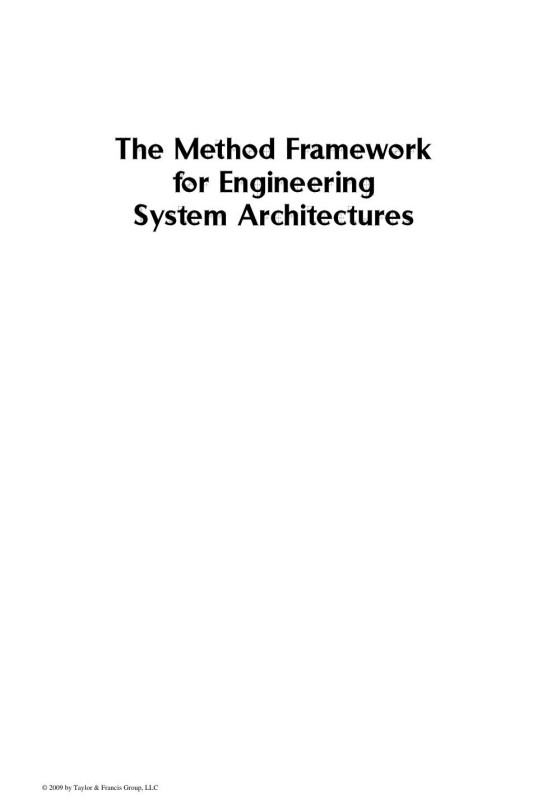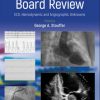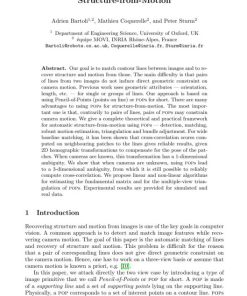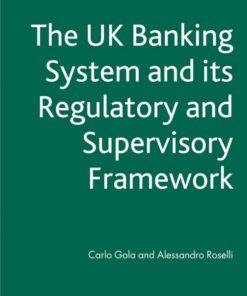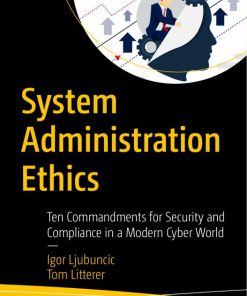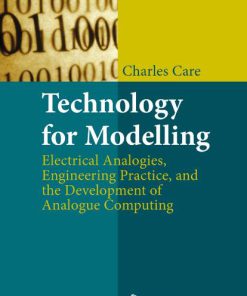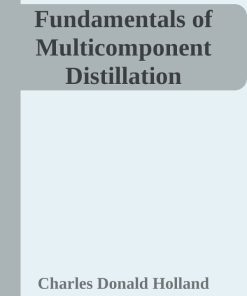The Method Framework for Engineering System Architectures 1st Edition by Donald Firesmith, Peter Capell, Charles Hammons, DeWitt Latimer, Tom Merendino, Dietrich Falkenthal ISBN 1420085751 9781420085754
$50.00 Original price was: $50.00.$25.00Current price is: $25.00.
Authors:Donald G. Firesmith , Tags:Front Matter , Author sort:Firesmith, Donald G. , Languages:Languages:eng , Published:Published:May 2011 , Comments:Comments:Front Matter
The Method Framework for Engineering System Architectures 1st Edition by Donald G. Firesmith, Peter Capell, Charles B. Hammons, DeWitt Latimer, Tom Merendino, Dietrich Falkenthal – Ebook PDF Instant Download/Delivery. 1420085751, 978-1420085754
Full download The Method Framework for Engineering System Architectures 1st Edition after payment
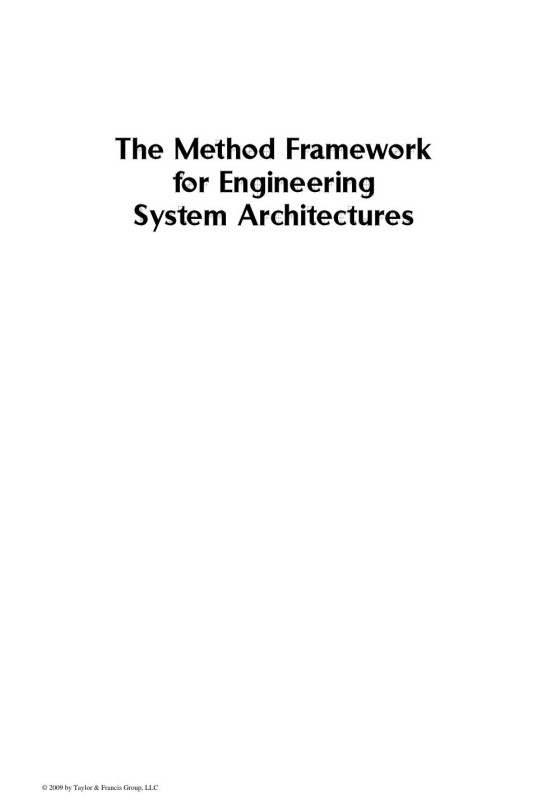
Product details:
ISBN 10: 1420085751
ISBN 13: 978-1420085754
Author: Donald G. Firesmith, Peter Capell, Charles B. Hammons, DeWitt Latimer, Tom Merendino, Dietrich Falkenthal
The architects of today’s large and complex systems all too often struggle with the lack of a consistent set of principles and practices that adequately address the entire breadth of systems architecture. The Method Framework for Engineering System Architectures (MFESA) enables system architects and process engineers to create methods for effectively and efficiently engineering high-quality architecture for systems, subsystems, and software components.
Meets the Needs of Specific Projects
The book begins by documenting the common challenges that must be addressed by system architecture engineering. It explores the major principles answering these challenges and forming the basis of MFESA. Next, the authors introduce MFESA, including its primary goals, inputs, tasks, outputs, and assumptions. Then they describe the fundamental concepts and terminology on which the systems architecture engineering is founded. This is followed by a description of each of the ten system architecture engineering tasks including associated goals and objectives, preconditions, inputs, steps, postconditions, work products, guidelines, and pitfalls.
Finally, the book documents the relationship between quality and architecture, explains the quality model underlying MFESA, and provides a summary of MFESA method framework, as well as a list of points to remember and future directions planned for MFESA.
Explains Specific Rationales
Organized as a handy desk reference, this book harnesses more than 100 years of the authors’ combined professional experience to provide extensive guidelines, best practices, and tips on avoiding possible pitfalls. It presents a direct rationale of why steps are taken, how things can go wrong, and guidance for how and when to tailor the model for a system’s specific context.
CRC Press is pleased to announce that The Method Framework for Engineering System Architectures has been added to Intel Corporation’s Recommended Reading List. Intel’s Recommended Reading program provides technical professionals a simple and handy reference list of what to read to stay abreast of new technologies. Dozens of industry technologists, corporate fellows, and engineers have helped by suggesting books and reviewing the list. This is the most comprehensive reading list available for professional computer developers.
The Method Framework for Engineering System Architectures 1st Table of contents:
1. Introduction
- 1.1 To Begin …
- 1.2 Why This Book Is Needed
- 1.3 Why System Architecture Is Critical to Success
- 1.4 Why System Architecture Engineering Is Critical to Architecture
- 1.5 A Common System Architecture Engineering Method Is Insufficient
2. System Architecture Engineering Challenges
- 2.1 Introduction
- 2.2 General Systems Architecture Engineering Challenges
- 2.3 Challenges Observed in System Architecture Engineering Practice
- 2.3.1 Industry Has a Poor Architecture Engineering Track Record
- 2.3.2 Many Architecture Defects Are Found during Integration and Testing
- 2.3.3 Processes Are Inconsistent in Practice
- 2.3.4 Architectural Representations Are Often Missing, Incomplete, Incorrect, or Out of Date
- 2.3.5 Architectural Models Are Treated as the Sole Architectural Representations
- 2.3.6 Architectural Models Are Often Not Understandable
- 2.3.7 Architecture Engineering Underemphasizes Specialty Engineering Focus Areas
- 2.3.8 How Good Is “Good Enough”?
- 2.3.9 Lack of Adequately Trained and Experienced Architects
- 2.3.10 Multiple Inconsistent Architecture Engineering Methods
- 2.3.11 Architecture Engineering Methods Are Incompletely Documented
- 2.3.12 Architects Rely Too Much on Architectural Engineering Tools
- 2.3.13 Weak Connection between Architecture and Design
- 2.4 Challenges Observed in Systems Architecture Engineering Methods
- 2.4.1 Incompleteness of Current Methods
- 2.4.2 Methods Do Not Scale Up
- 2.4.3 Assumption of “Greenfield” Development
- 2.4.4 Overemphasis on Architecture Development
- 2.4.5 Overemphasis on Functional Decomposition
- 2.4.6 Overemphasis on Physical Decomposition
- 2.4.7 Weak Structure, View, and Focus Area Consistency
- 2.4.8 Codification of Old Processes
- 2.4.9 Emphasis on Waterfall Development Cycle
- 2.4.10 Confusion between Requirements Engineering and Architecture Engineering
- 2.4.11 Underemphasis on Quality Characteristics
- 2.4.12 Assumption of “One Size Fits All”
- 2.4.13 Single Architectural Vision
- 2.4.14 Overreliance on Local Interface Specifications
- 2.4.15 Lack of Underlying Ontology
- 2.4.16 Confusion between Architecture and Architecture Representations
- 2.4.17 Excessive Emphasis on Architectural Models
- 2.4.18 Overemphasis on Expert Points of View
- 2.5 Reasons for Improved Systems Architecture Engineering Methods
- 2.6 Summary of the Challenges
3. System Architecture Engineering Principles
- 3.1 The Importance of Principles
- 3.2 The Individual Principles
- 3.3 Summary of the Principles
4. MFESA: An Overview
- 4.1 The Need for MFESA
- 4.2 MFESA Goal and Objectives
- 4.3 What Is MFESA?
- 4.3.1 Ontology
- 4.3.2 Metamodel
- 4.3.3 Repository
- 4.3.3.1 Method Components: Tasks
- 4.3.3.2 Method Components: Architectural Workers
- 4.3.4 Metamethod
- 4.4 Inputs
- 4.5 Outputs
- 4.6 Assumptions
- 4.6.1 The Number and Timing of System Architecture Engineering Processes
- 4.7 Relationships with Other Disciplines
- 4.7.1 Requirements Engineering
- 4.7.2 Design
- 4.7.3 Implementation
- 4.7.4 Integration
- 4.7.5 Testing
- 4.7.6 Quality Engineering
- 4.7.7 Process Engineering
- 4.7.8 Training
- 4.7.9 Project/Program Management
- 4.7.10 Configuration Management
- 4.7.11 Risk Management
- 4.7.12 Measurements and Metrics
- 4.7.13 Specialty Engineering Disciplines
- 4.8 Guidelines
- 4.9 Summary
- 4.9.1 MFESA Components
- 4.9.2 Goal and Objectives
- 4.9.3 Inputs
- 4.9.4 Tasks
- 4.9.5 Outputs
- 4.9.6 Assumptions
- 4.9.7 Other Disciplines
- 4.9.8 Guidelines
5. MFESA: The Ontology of Concepts and Terminology
- 5.1 The Need for Mastering Concepts and Their Ramifications
- 5.2 Systems
- 5.3 System Architecture
- 5.4 Architectural Structures
- 5.5 Architectural Styles, Patterns, and Mechanisms
- 5.6 Architectural Drivers and Concerns
- 5.7 Architectural Representations
- 5.8 Architectural Models, Views, and Focus Areas
- 5.9 Architecture Work Products
- 5.10 Architectural Visions and Vision Components
- 5.11 Guidelines
- 5.12 Pitfalls
- 5.13 Summary
6. Task 1: Plan and Resource the Architecture Engineering Effort
- 6.1 Introduction
- 6.2 Goal and Objectives
- 6.3 Preconditions
- 6.4 Inputs
- 6.5 Steps
- 6.6 Postconditions
- 6.7 Work Products
- 6.8 Guidelines
- 6.9 Pitfalls
- 6.10 Summary
7. Task 2: Identify the Architectural Drivers
- 7.1 Introduction
- 7.2 Goal and Objectives
- 7.3 Preconditions
- 7.4 Inputs
- 7.5 Steps
- 7.6 Postconditions
- 7.7 Work Products
- 7.8 Guidelines
- 7.9 Pitfalls
- 7.10 Summary
8. Task 3: Create the First Versions of the Most Important Architectural Models
- 8.1 Introduction
- 8.2 Goal and Objectives
- 8.3 Preconditions
- 8.4 Inputs
- 8.5 Steps
- 8.6 Postconditions
- 8.7 Work Products
- 8.8 Guidelines
- 8.9 Pitfalls
- 8.10 Summary
9. Task 4: Identify Opportunities for the Reuse of Architectural Elements
- 9.1 Introduction
- 9.2 Goal and Objectives
- 9.3 Preconditions
- 9.4 Inputs
- 9.5 Steps
- 9.6 Postconditions
- 9.7 Work Products
- 9.8 Guidelines
- 9.9 Pitfalls
- 9.10 Summary
10. Task 5: Create the Candidate Architectural Visions
- 10.1 Introduction
- 10.2 Goal and Objectives
- 10.3 Preconditions
- 10.4 Inputs
- 10.5 Steps
- 10.6 Postconditions
- 10.7 Work Products
- 10.8 Guidelines
- 10.9 Pitfalls
- 10.10 Summary
11. Task 6: Analyze Reusable Components and Their Sources
- 11.1 Introduction
- 11.2 Goal and Objectives
- 11.3 Preconditions
- 11.4 Inputs
- 11.5 Steps
- 11.6 Postconditions
- 11.7 Work Products
- 11.8 Guidelines
- 11.9 Pitfalls
- 11.10 Summary
12. Task 7: Select or Create the Most Suitable Architectural Vision
- 12.1 Introduction
- 12.2 Goal and Objectives
- 12.3 Preconditions
- 12.4 Inputs
- 12.5 Steps
- 12.6 Postconditions
- 12.7 Work Products
- 12.8 Guidelines
- 12.9 Pitfalls
- 12.10 Summary
13. Task 8: Complete the Architecture and Its Representations
- 13.1 Introduction
- 13.2 Goals and Objectives
- 13.3 Preconditions
- 13.4 Inputs
- 13.5 Steps
- 13.6 Postconditions
- 13.7 Work Products
- 13.8 Guidelines
- 13.9 Pitfalls
- 13.10 Summary
14. Task 9: Evaluate and Accept the Architecture
- 14.1 Introduction
- 14.2 Goals and Objectives
- 14.3 Preconditions
- 14.4 Inputs
- 14.5 Steps
- 14.6 Postconditions
- 14.7 Work Products
- 14.8 Guidelines
- 14.9 Pitfalls
- 14.10 Summary
15. Task 10: Maintain the Architecture and Its Representations
- 15.1 Introduction
- 15.2 Goals and Objectives
- 15.3 Preconditions
- 15.4 Inputs
- 15.5 Steps
- 15.6 Invariants
- 15.7 Work Products
- 15.8 Guidelines
- 15.9 Pitfalls
- 15.10 Summary
16. MFESA Method Components: Architectural Workers
- 16.1 Introduction
- 16.2 System Architects
- 16.2.1 Definitions
- 16.2.2 Types of System Architect
- 16.2.3 Responsibilities
- 16.2.4 Authority
- 16.2.5 Tasks
- 16.2.6 Profile
- 16.2.6.1 Personal Characteristics
- 16.2.6.2 Expertise
- 16.2.6.3 Training
- 16.2.6.4 Knowledge
- 16.3 System Architecture Team Members
- 16.3.1 Background
- 16.3.2 Responsibilities
- 16.3.3 Authority
- 16.3.4 Tasks
- 16.3.5 Skills
- 16.3.6 Profile
- 16.3.6.1 Personal Characteristics
- 16.3.6.2 Expertise
- 16.3.6.3 Training
- 16.3.6.4 Knowledge
- 16.3.7 Relationships
- 16.4 Summary
17. Method Components: Process Framework and Other Tools
- 17.1 Process Framework
- 17.1.1 System Architecture Engineering Process
- 17.1.2 Process Phases
- 17.1.3 Process Flow
- 17.2 Other Tools
- 17.3 Summary
People also search for The Method Framework for Engineering System Architectures 1st:
the scientific method a framework for inquiry
solution of problems of elasticity by the framework method
framework of the scientific method
what is methodology framework
framework method for the analysis of qualitative data

